Let’s get one thing straight: The sidewalks of Paris are not littered with dog poo.
Hefty fines have curtailed most déjections, as they are called. A while back, a Paris woman who not only failed to clean up after her two Jack Russells but also insulted the cops who told her she should was fined a total of €450 ($506) by a court. The regular penalty is 35 euros, and it’s enforced.
Charlie and I clean up assiduously after Hester, our granddog. She’s staying with us for a few weeks while Louise spends time at a retreat center in Eastern France. Hester fits well into our household, joyously greeting us on awakening and reveling at mealtime, play time, walk time and pretty much all the time. Our cat, Jake, was somewhat less cheerful at first but the two eventually settled into a routine that involves only one or two barking-and-hissing episodes a day.
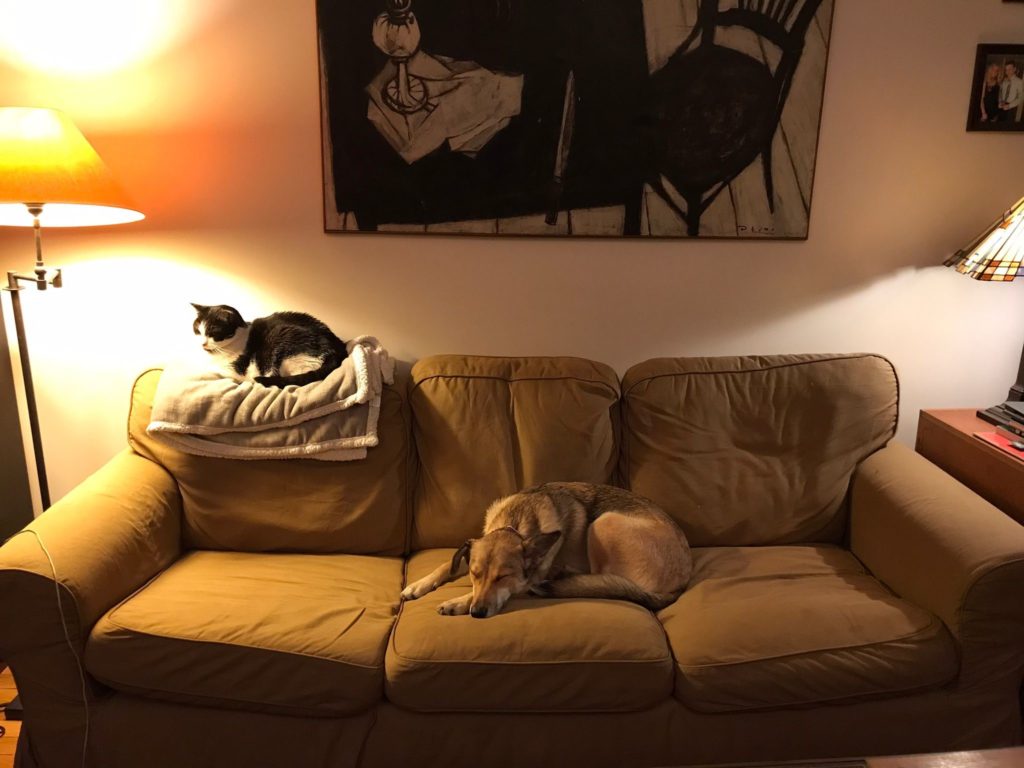
Hester was adopted from Skopje, North Macedonia. Louise got her from an agency that rescues the dogs, vaccinates and socializes them and sends them to nascent owners in Germany.
Hester has given us an opportunity to learn about French dog owners and thus, perhaps, the French. Our experiences remind us of when our kids were little in Paris and we took them out. Then, as now, we were told how to raise our small beings, what we were doing wrong and how “mal élevé” our dependents were.
Hester once peed on the sidewalk while Charlie was walking her and a woman looked askance. “You should have your dog pee in the street,” she snapped. He responded “Really?” with amazement. “Vous vous foutez de moi,” she answered. You don’t care what I’m saying. The actual meaning is more vulgar.
Louise left a four-page handbook with specific instructions about Hester’s walks: There should be at least three a day totaling at least two hours. We quickly figured out that the best way to keep the dog moving without having to move much ourselves was to take her to an “espace canin,” or dog park.
This sometimes requires rail travel, which isn’t a problem because Hester takes the train and the Métro with aplomb, even when nervous dog newbies are in charge.
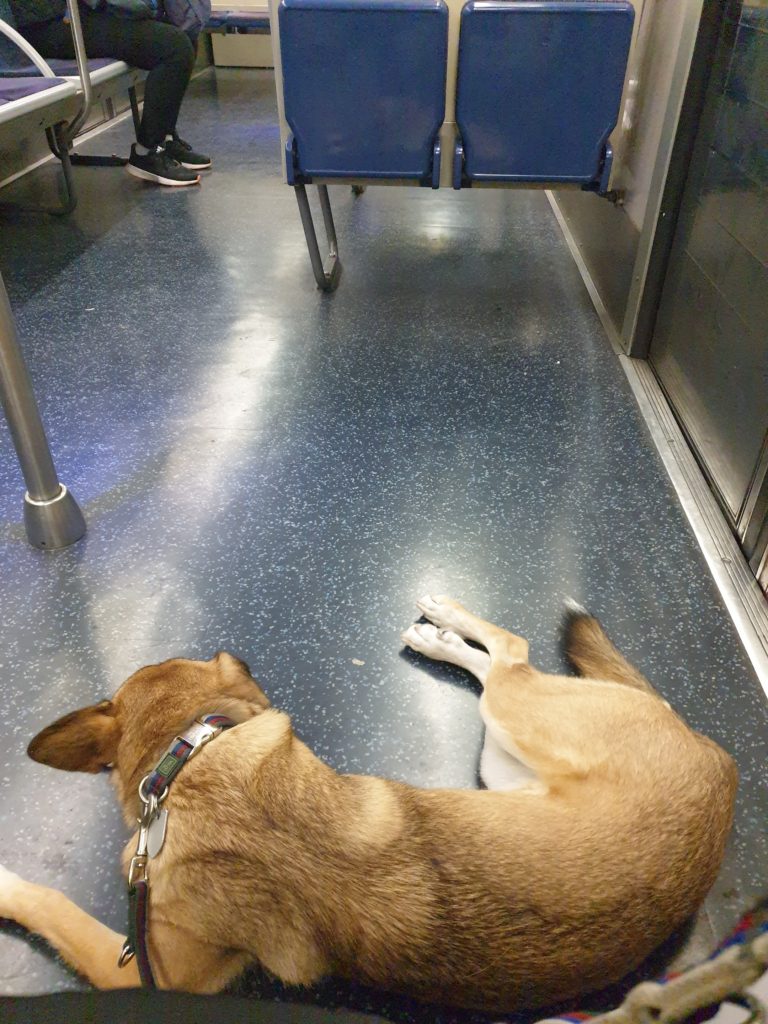
Paris has 13 dog parks, and outside the city are a few others. The closest to us is a small park in the Batignolles area of the 17th arrondissement, and we hang out there a lot. The surface is mostly concrete, which reminds me of the playgrounds at the elementary schools our kids attended in Paris.
Hester is still getting to know the locals.

Photo: Louise Trueheart
Batignolles is a funky, trendy area and the owners reflect that – young, hip and a tad aloof. They talk mostly to their their dogs, who mostly trot around and sniff each other.
I had a different experience when I took Hester to a dog park just north of Paris, on the Ile de la Jatte. The Impressionists used to go there to paint: I have stood in the place where Georges Seurat painted his pointillist masterpiece. The island features several reproductions of the works created there, each set against the original location.
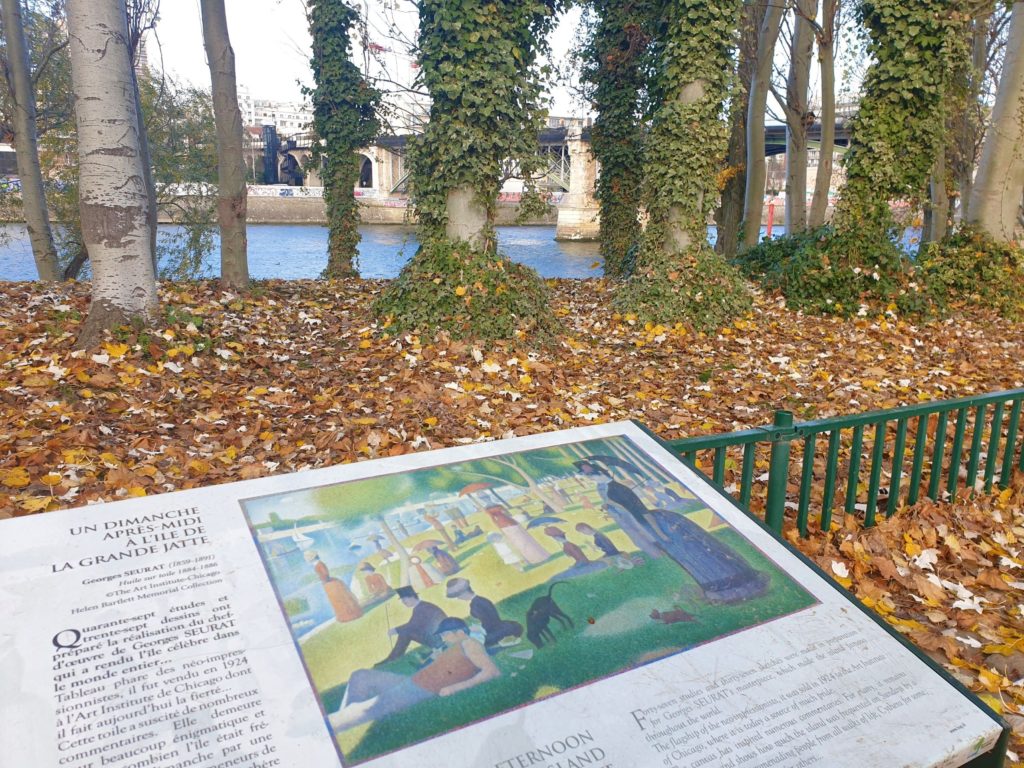
I doubt there was a dog park on the island in those days. The one now is much bigger and rustic than the one in Batignolles, and so are the dogs.
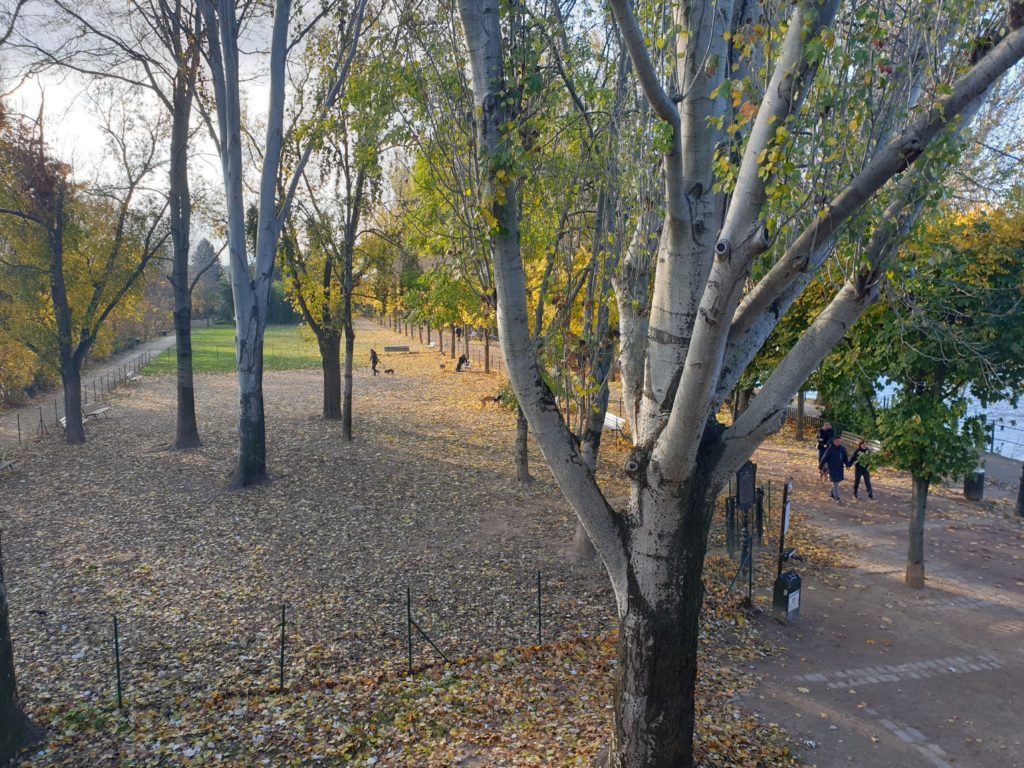
I don’t have to worry about Hester. Her Skopje street sense serves her well. But the other day, a French bulldog named Gaston, very male, wouldn’t stop bothering Nina, a female Staffordshire Terrier twice his size.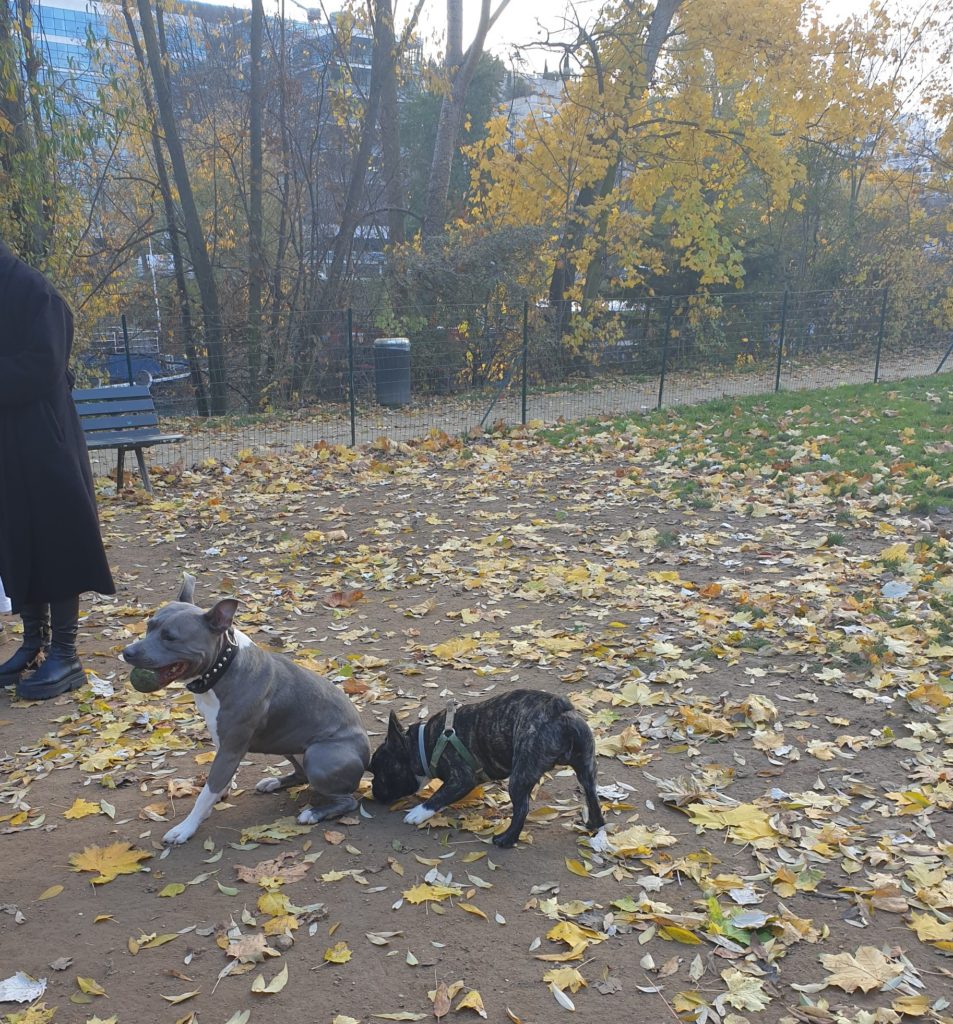
The owner of Nina flapped her hands and made despairing noises, but the owner of Gaston paid no attention.
“Isn’t it nice when they can work out their own differences!” he exclaimed happily as Nina raced away from Gaston yet again (Our experience is that the French are reluctant to castrate their dogs.).
Owner conflict was sharper when I was part of it. I once took a ball and one of those rubber launcher things to the park. As soon as the ball flew into the air, a pack of dogs went after it (not including Hester, who is so-so about balls). When they returned, a huge white dog that may have been a Great Pyrenees jumped up on me, grabbed the launcher and started chewing it. I was nearly knocked over.
“Madame, you know it’s a bad idea to throw a ball in here. It causes conflict among the dogs,” the female owner said reprovingly as she tried and failed to wrest the launcher from her mountain of a pet.
“Madame,” I responded, “the conflict is not among the dogs. The conflict is that your dog jumped on me.”
“You shouldn’t have launched the ball,” she said.
“You should have trained your dog,” I said.
“Oh,” came the sarcastic response. “Now you’re turning it on me.”
I read that such conflicts are being resolved in New York by the creation of private dog parks, where people can pay as much as $2,200 to avoid the city’s 84 public dog runs. It’s hard to imagine that in Paris, where the private sector is not seen as the solution to much of anything.
Not that big government deters all dog déjections, as a pedestrian before me discovered the other day.

I didn’t have Hester with me at that moment, so had no fear of being mistaken for the culprit. But her excretions are one of many Hester-related subjects that enliven our cocktail conversations these days. Is it OK not to clean up what she produces in the street? What if she produces in the street but it’s covered with leaves so pedestrians can’t see it?
These conversations are usually held while Hester dozes peacefully next to one of us on the couch. We’ll miss her when she goes back to Berlin, and not just as a topic of conversation.

Thanks for this stroll down memory lane, especially in and around the Square des Batignolles, which was near my bus stop when I was a student at the Sorbonne (before it became Paris IV).
You are so welcome! It’s a lovely park indeed.
Thanks Anne. Being a serious dog lover, I loved this offering.
Best,
Winky
Anne, it’s been five years since we llived in Paris. Back then it seemed no dog owners were ever fined for not cleaning up after their dogs and there was plenty oif ;poop on the trottoirs. Have things really improved. Here in Edinburgh, we’re fortunate to live a block away from a wonder park which is doggie heaven. Owners are very responsible and poop on a sidewalk is rare. I always take two poop bags to be sure to clean up after our cockapoo. Best wishes to you and Charlie — Evan
Thanks, Evan!
Loved reading this, Anne. Wish we could meet you at the dog park with ours!
Me too!
Like watching the kids, for sure
That’s quite a tail on Hester, beautiful…and yet, did you have to make much accommodation in your home when she moved in, to keep from things being knocked off of horizontal surfaces?
I enjoy your missives
Hi Peggy! Yes, Hester has a pretty powerful tail but so far hasn’t knocked anything off. Glad you like the posts!
Loved the post Anne. It brought back so many funny memories (and frustrating) of our time in Paris. More please
Thanks so much, Elizabeth!
Wonderful post that brings back many memories of Biscuit’s years in Paris. I love the story of the woman who starts out her interaction by blaming you and then objects when you blame her. I try to avoid stereotypes, but, erm, that’s quite French. 🙂
I used to joke that not picking up crottes was an act of worker solidarity because it provided jobs for street sweepers. If people are picking up their own now, it’s yet another sign of the demise of the PS.
Very funny! As if we needed any more signs of the demise of the Socialists! Glad you enjoyed the post.